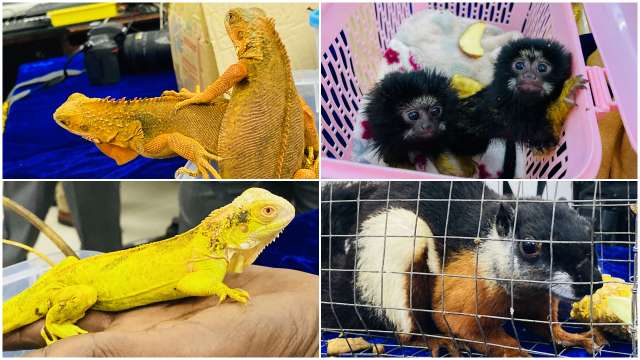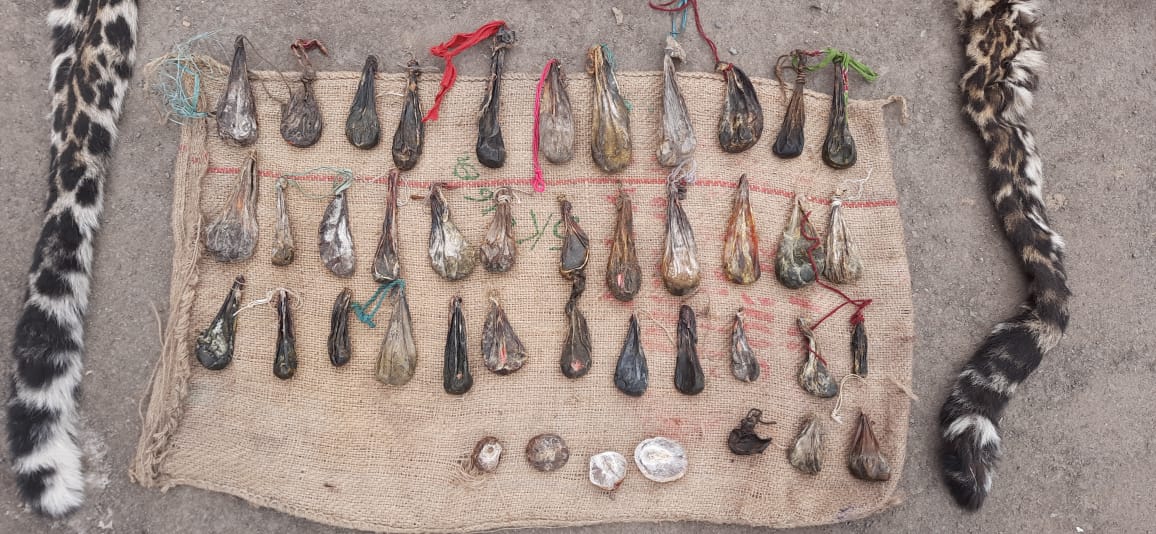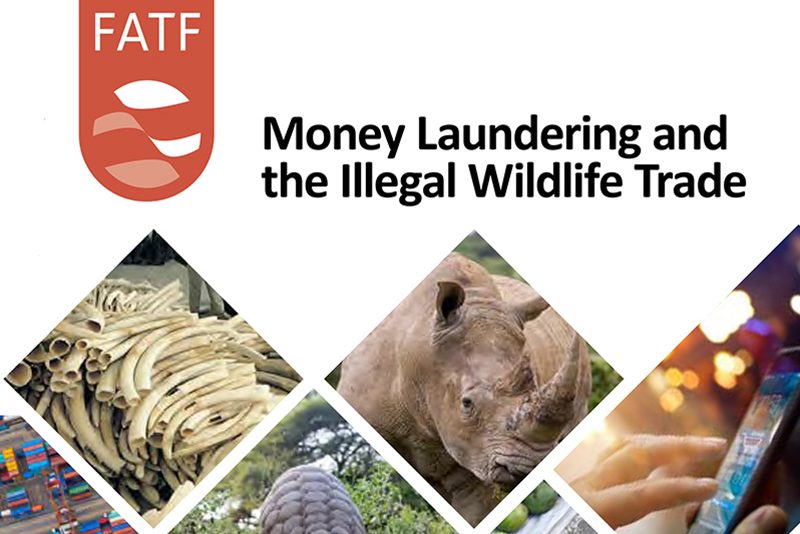Combating Money Laundering Associated With Wildlife Crimes In India

Wildlife crime is considered to be a “High Profit and Low Risk” crime. In India the conviction rate in wildlife crime cases is just 2-3 percent. Though wildlife crime is a serious financial crime, yet financial investigation is conducted in few cases only. Like any other trafficking activities, there is a value chain/supply chain in wildlife trafficking also. As per UNODC ‘World Wildlife Crime Report’ 2020, the transnational value chain consists of Poachers, Runners/Brokers, Intermediaries/Dealers, Exporters/Importers, Wholesale Traders and Retailers.
The value of the wildlife contrabands increases substantially when it reaches from lower level of value chain to higher level of value chain. Thus, the maximum profits/blood money or proceeds of crime generated out of wildlife trafficking is pocketed by the players sitting on the higher levels of value chain. Therefore, it becomes imperative for the law enforcement to dismantle the entire value chain and take the profit out of the pockets of the wildlife traffickers by way of effective financial investigation. Merely catching poachers or runners/brokers will not put an end to wildlife crimes as in low and middle income countries many people may be ready to become poachers, runners/brokers due to their poor economic conditions. Wildlife trafficking syndicates may exploit such vulnerabilities of economically weaker sections and this vicious cycle of wildlife crime/trafficking may continue.

As per World Bank’s report titled “Illegal Logging, Fishing and Wildlife Trade: The Cost and How to Combat IT” released in October, 2019, the illegal wildlife trade including illegal logging and illegal fishing is worth USD 73-216 billion annually. According to the UN, in 2016 the annual value of illegal wildlife trade (excluding timber and fisheries) is estimated to be worth USD 7-23 billion. This is the fourth largest transnational organized crime in the world after drugs trafficking, counterfeit products trafficking and human trafficking. Many Terrorists/Militants/Insurgents organizations in different parts of the world have been using wildlife trafficking as a source of funding for their activities. In North-East India, members of some Insurgents Groups have been found involved in wildlife trafficking. Thus wildlife trafficking poses a serious threat for National and International Security also.

Acknowledging the serious threat of Money Laundering by the Wildlife Traffickers Financial Action Task Force (FATF) published a Report “Money Laundering and the Illegal Wildlife Trade” in June, 2020. In this Report, FATF has mentioned various methods of Money Laundering adopted by the Wildlife Traffickers. This includes ‘Use of ‘Front’ Companies to Co-mingle Illegal and Legal Proceeds’, ‘Use of Shell Companies to Hide Beneficial Owners’, ‘Trade-based money laundering (TBML)’ ‘Purchase of Real Estate and Luxury Goods’, ‘Use Of Casino Business’ ‘Money Value Transfer Systems (MVTS) / Hawala and Other Similar Service Providers (HOSSPs) e.g. “fei chen’”, or “hundi”, ‘Use of Pre-paid Cards to Launder Proceeds from Wildlife Trafficking’ and ‘Use of Mobile Apps to Move Value for Wildlife Crimes’ etc.

Therefore, Financial Investigation must be an integral part of any Investigation in Wildlife Crime/Trafficking case. India has a very robust Legal and Enforcement Framework to combat the Money Laundering by the wildlife criminals:
FIU-INDIA: Financial Intelligence Unit, India provides quality financial intelligence pertaining to money laundering & terror financing to law enforcement agencies by sharing STR (Suspicious Transaction Report), CTR (Cash Transaction Report) and CBWR (Cross Border Wire Transfer Report) received from Reporting Entities i.e. financial institutions. Such financial intelligence are very useful for tackling money laundering by wildlife criminals.
The Egmont Group of Financial Intelligence Units (FIUs): The Egmont Group is a united body of 167 FIUs. The Egmont Group provides a platform for the secure exchange of expertise and financial intelligence to combat money laundering and terrorist financing. India being a member of this Group, this platform must be used by wildlife law enforcement in India for combating transnational wildlife trafficking.

The Customs Act, 1962: The definition of “goods” under section 2(22) includes ‘currency and negotiable instruments’ and ‘any other kind of movable property’ also. Section 121 provides for confiscation of sale-proceeds of smuggled goods including wildlife contrabands.
The Smugglers and Foreign Exchange Manipulators (Forfeiture of Property) Act, 1976: This Act provides for the forfeiture of illegally acquired properties of smugglers including wildlife smugglers and foreign exchange manipulators falling under following categories: (a) who has been convicted under the Customs Act, 1962; (b) every person in respect of whom an order of detention has been made under the Conservation of Foreign Exchange and Prevention of Smuggling Activities Act, 1974; (c) every person who is a relative of a person referred to in clause (a) or clause (b); (d) every associate of a person referred to in clause (a) or clause (b); (e) any holder (hereafter in this clause referred to as the present holder) of any property which was at any time previously held by a person referred to in clause (a) or clause (b) unless the present holder or, as the case may be, anyone who held such property after such person and before the present holder, is or was a transferee in good faith for adequate consideration.
.png)
Wild Life (Protection) Act, 1972: Chapter VIA of WPA, 1972 provides for forfeiture of property derived from illegal hunting and trade of wildlife contrabands. As per Section 58A, the provisions of this Chapter shall apply only to the persons falling under following categories: (a) every person who has been convicted of an offence punishable under this Act with imprisonment for a term of three years or more; (b) every associate of a person referred to in clause (a); (c) any holder (hereafter in this clause referred to as the present holder) of any property which was at any time previously held by a person referred to in clause (a) or clause (b) unless the present holder or, as the case may be, anyone who held such property after such person and before the present holder, is or was a transferee in good faith for adequate consideration.

Prevention of Money Laundering Act, 2002: PMLA is the most important Act to combat the financial crimes/money laundering associated with wildlife trafficking. Paragraph 6 of the Schedule to the PMLA pertains to offences covered under Sections 9, 17A, 39, 44, 48, 49B (all read with Section 51) of the Wild Life (Protection) Act, 1972. Paragraph 12 of the Schedule to the PMLA pertains to offences covered under Sections 135 of the Customs Act, 1972. Therefore, if any wildlife crime case is booked under any of aforementioned Sections of WPA and Customs Act, that offence becomes a predicate offence to be investigated under PMLA also. Similarly, if a corruption case is booked against any government employee for his role in wildlife crime/smuggling under Prevention of Corruption Act, 1988, he can be booked under PMLA also.
Section 3 of PMLA defines “Money Laundering” as follows: ‘Whosoever directly or indirectly attempts to indulge or knowingly assists or knowingly is a party or is actually involved in any process or activity connected with the proceeds of crime and projecting it as untainted property shall be guilty of offence of money-laundering.’ “Proceeds of Crime” has been defined under Section 2(1)(u) as follows: “proceeds of crime” means any property derived or obtained, directly or indirectly, by any person as a result of criminal activity relating to a scheduled offence or the value of any such property; and as per Finance Act, 2015 this definition has been further broadened by inserting the words “or where such property is taken or held outside the Country, then the property equivalent in value held within the Country.” Section 4 provides for “Punishment” for money-laundering as follows: “Whoever commits the offence of money-laundering shall be punishable with rigorous imprisonment for a term which shall not be less than three years but which may extend to seven years and shall also be liable to fine which may extend to five lakh rupees.”
Attachment and Confiscation provisions have also been laid down under PMLA. Section 5 (1) empowers an officer of the rank of Deputy Director and above to attach any property which is proceeds of crime or involved in the commission of offence of money laundering after recording the reasons. The attachment is normally done after filing of Police Report/Charge - Sheet and the attachment is valid for 180 days from the date of attachment provided it is confirmed by Adjudicating Authority. However, under the extreme urgency the authorized officer can also attach the properties even without waiting for filing of Charge-Sheet/Complaint by Law Enforcement Agency (LEA) in accordance with the provisions contained in second proviso of Section 5 (1) of the Act. The attaching officer is required to file a complaint before Adjudicating Authority constituted under Section 6 of the Act within 30 days from the date of attachment. The Adjudicating Authority shall issue a Show Cause Notice to all the defendants and hear their counsels. The Adjudicating Authority if satisfied that the such properties are involved in money laundering, it shall by an order confirm the Provisional Attachment Order (PAO). Upon confirmation of PAO it shall continue during the pendency of the criminal prosecution and become final after an order of confiscation by Special Court. As soon as the PAO is confirmed, the Director or any officer authorized by him, shall take possession of all the properties forthwith. The Special Court under Section 8 (5) of the Act after conclusion of money laundering trial finds that the offence of money laundering has been committed, it shall order for confiscation to the Central Government.

From the above paragraphs It’s very clear that India has a very robust mechanism to combat the financial crime/money laundering associated with wildlife trafficking. Of late, Enforcement Directorate has filed ECIR (Enforcement Case Information Report) under PMLA in many wildlife crime cases. However, there appears to be a need of better coordination and information sharing between Forest Authorities, Police Authorities, Customs Authorities and Enforcement Directorate in cases of wildlife crimes/trafficking. Though there are more than 70,000 wildlife crime cases pending in various Courts, only few cases are being investigated under Prevention of Money Laundering Act.
Till date only one case of wildlife crime (Surajbhan Case) has resulted in successful conviction under PMLA wherein the accused was sentenced to 4 years of rigorous imprisonment along with a fine of Rs. 10,000. The Hon’ble Court also ordered for the confiscation of Rs. 52.7 lakhs that were attached by the Enforcement Directorate during the course of investigation in this case. (https://www.theweek.in/content/archival/wire-updates/national/2019/09/13/del22-ed-conviction.html).
To conclude, “Following the Money” of Wildlife Criminals/Traffickers and hitting them where it hurts most i.e. their Bank Accounts and other Movable/Immovable Properties acquired from “Proceeds of Crime” generated from wildlife crimes/trafficking is must to combat this menace effectively.





Please sign in or register for FREE
If you are a registered user on WildHub, please sign in
Thank you @ARVIND KUMAR CHAURASIA, JOINT COMMISSIONER, IRS(C&IT:2010) for sharing such an important topic
Thank you Lize.